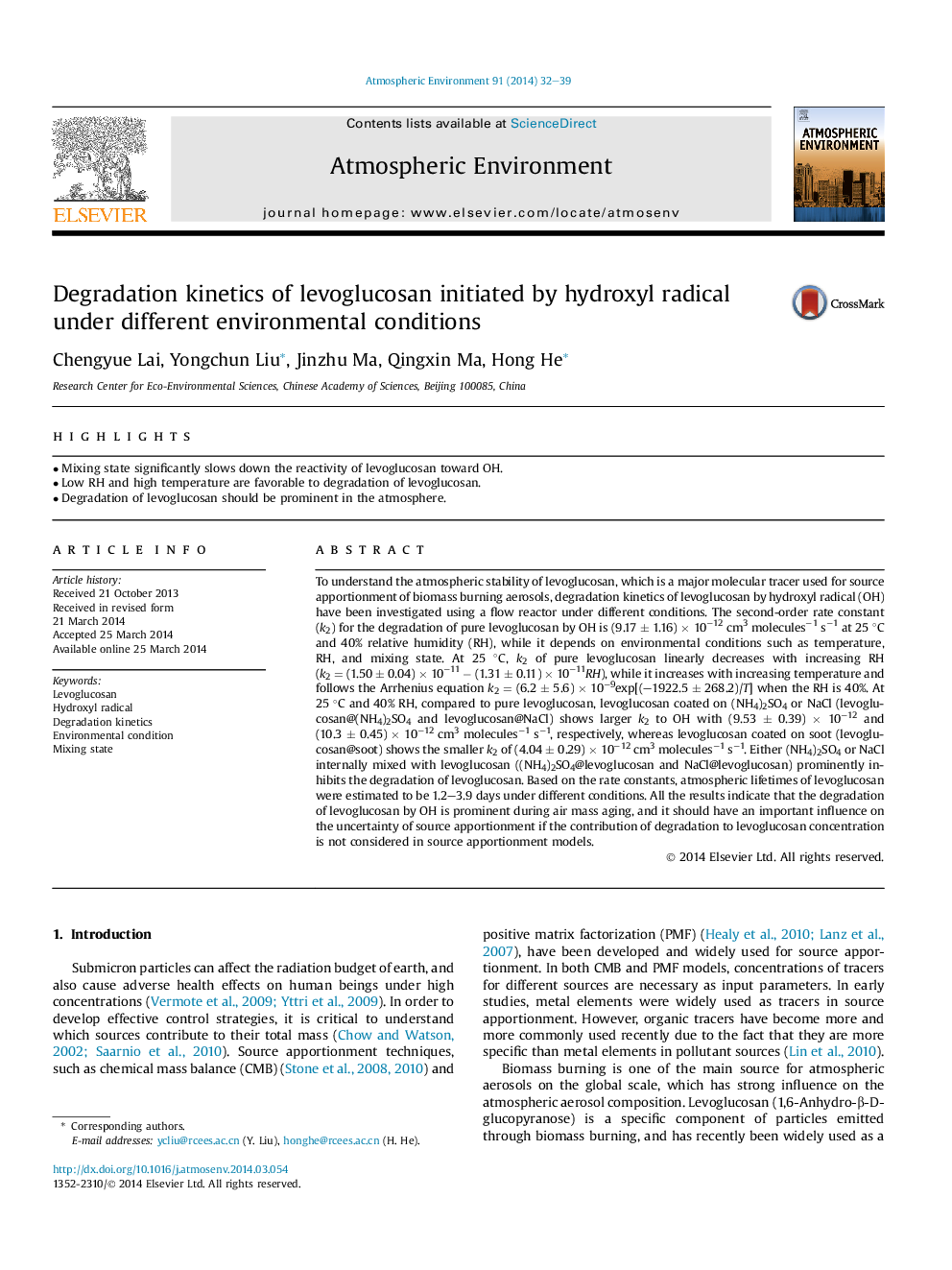| Article ID | Journal | Published Year | Pages | File Type |
|---|---|---|---|---|
| 6339450 | Atmospheric Environment | 2014 | 8 Pages |
Abstract
To understand the atmospheric stability of levoglucosan, which is a major molecular tracer used for source apportionment of biomass burning aerosols, degradation kinetics of levoglucosan by hydroxyl radical (OH) have been investigated using a flow reactor under different conditions. The second-order rate constant (k2) for the degradation of pure levoglucosan by OH is (9.17 ± 1.16) Ã 10â12 cm3 moleculesâ1 sâ1 at 25 °C and 40% relative humidity (RH), while it depends on environmental conditions such as temperature, RH, and mixing state. At 25 °C, k2 of pure levoglucosan linearly decreases with increasing RH (k2 = (1.50 ± 0.04) Ã 10â11 â (1.31 ± 0.11) Ã 10â11RH), while it increases with increasing temperature and follows the Arrhenius equation k2 = (6.2 ± 5.6) Ã 10â9exp[(-1922.5 ± 268.2)/T] when the RH is 40%. At 25 °C and 40% RH, compared to pure levoglucosan, levoglucosan coated on (NH4)2SO4 or NaCl (levoglucosan@(NH4)2SO4 and levoglucosan@NaCl) shows larger k2 to OH with (9.53 ± 0.39) Ã 10â12 and (10.3 ± 0.45) Ã 10â12 cm3 moleculesâ1 sâ1, respectively, whereas levoglucosan coated on soot (levoglucosan@soot) shows the smaller k2 of (4.04 ± 0.29) Ã 10â12 cm3 moleculesâ1 sâ1. Either (NH4)2SO4 or NaCl internally mixed with levoglucosan ((NH4)2SO4@levoglucosan and NaCl@levoglucosan) prominently inhibits the degradation of levoglucosan. Based on the rate constants, atmospheric lifetimes of levoglucosan were estimated to be 1.2-3.9 days under different conditions. All the results indicate that the degradation of levoglucosan by OH is prominent during air mass aging, and it should have an important influence on the uncertainty of source apportionment if the contribution of degradation to levoglucosan concentration is not considered in source apportionment models.
Related Topics
Physical Sciences and Engineering
Earth and Planetary Sciences
Atmospheric Science
Authors
Chengyue Lai, Yongchun Liu, Jinzhu Ma, Qingxin Ma, Hong He,
